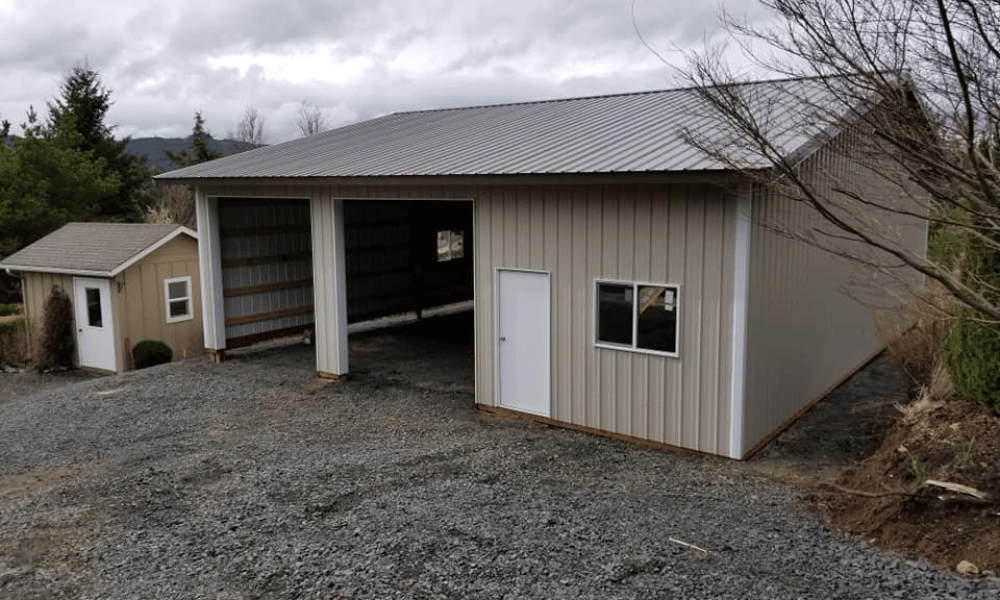Introduction
Creating a space that's both functional and aesthetically pleasing is a challenge many homeowners face, especially when it comes to designing a pole barn garage. These structures are not just utilitarian; they can be transformed into efficient workshops that meet your needs while reflecting your personality. So, how do we structure our pole barn garage to maximize efficiency and comfort? Let's dive into the top tips for structuring your pole barn garage with an efficient workshop.
Understanding Pole Barn Garages
What Are Pole Barn Garages?
Pole barn garages are versatile structures built using post-frame construction techniques. They're typically made of wooden poles or metal frames and can serve a variety of purposes, from storing vehicles to functioning as workshops. The beauty of these garages lies in their customizable nature—allowing you to create a space that perfectly suits your needs.
Benefits of Using Pole Barn Garages
Affordability: Compared to traditional garages, pole barns generally cost less. Customization: You can design them according to your specifications. Durability: Made from sturdy materials, they're built to last. Versatility: They can serve multiple functions—storage, workshop, or even a man cave!Top Tips for Structuring Your Pole Barn Garage with an Efficient Workshop
Plan Before You Build
Why Planning Matters
Before you grab that hammer, take a step back! Planning is crucial for any successful project. It helps prevent costly mistakes and ensures you utilize every square inch effectively.
Key Factors to Consider in Your Plan
- Space Requirements: What will you store? Vehicles? Tools? Workflow Layout: How will you move around the workshop? Future Expansion: Do you foresee needing more space down the line?
Choosing the Right Location
Site Selection Tips
Choosing where to place your pole barn garage can significantly affect its functionality. Here’s what you should consider:
- Accessibility: Make sure it’s easily reachable from your home. Local Zoning Laws: Check regulations regarding building structures on your property. Sunlight and Wind Direction: Positioning matters; avoid drafts and maximize natural light.
Designing an Efficient Layout
Understanding Workflow Patterns
Why Workflow is Important
A well-planned workflow allows for seamless operation in your workshop. You don’t want to be running back and forth looking for tools!
Creating Zones in Your Workshop Space
Divide your workspace into zones based on tasks:
- Storage Zone: For tools and materials. Work Zone: Where the actual work happens. Assembly Zone: A space dedicated to putting things together.
Optimizing Storage Solutions
Smart Storage Ideas
When it comes to organizing your tools and materials, being smart about storage can save you time and stress:
Vertical Storage Options: Shelving units can utilize vertical space. Pegboards for Tools: Keep tools visible and accessible.Utilizing Mobile Storage Solutions
Mobile carts or shelves can allow flexibility in managing workspace effectively!
Lighting Your Workspace
Importance of Proper Lighting
Good lighting is essential for any workshop environment. It reduces eye strain and increases productivity.
Types of Lighting
Natural Light Through Windows: Provides warmth and reduces electricity bills. Task Lighting Over Work Areas: Ensure adequate illumination where detailed work occurs. Ambient Lighting for Overall Illumination: Softens harsh overhead lights.Ventilation Essentials
Why Ventilation Matters
Proper ventilation keeps air fresh, removes fumes, and reduces humidity levels—crucial if you're working with paints or chemicals.
Ventilation Options
Windows That Open: Simple yet effective! Exhaust Fans: Help remove excess heat or odors quickly.Choosing the Right Tools
Essential Tools for Your Workshop
Having the right tools at hand makes all the difference! Here’s a quick list:
| Tool | Purpose | |--------------------|---------------------------| | Table Saw | Wood cutting | | Drill Press | Precision drilling | | Workbench | Assembly area | | Hand Have a peek at this website Tools | General purpose tasks |
Investing in Quality Over Quantity
It’s better to have fewer high-quality tools than a bunch of cheap ones that break easily!
Electrical Considerations
Power Needs Assessment
Assess how much power you'll need based on the tools you'll use regularly.
Safe Wiring Practices
Ensure you follow all safety codes when wiring your garage:
Consult an electrician if unsure about electrical setups. Use appropriate gauge wires depending on tool requirements.Climate Control Solutions
Heating Options
In colder months, heating becomes essential! Here are some options:
Electric Heaters Gas Units Insulated Walls & CeilingsCooling Solutions
During hot summer days, cooling systems help maintain comfort:
Ceiling Fans Portable Air Conditioners Insulation Against Heat GainFlooring Choices
Durable Flooring Options
The floor must withstand heavy use while being easy to clean:
Concrete Floors Epoxy Coatings Rubber MatsEach option has its pros and cons based on durability, maintenance, and cost!
FAQ Section
Here are some frequently asked questions related to structuring pole barn garages efficiently:
What size should my pole barn garage be?
A good rule of thumb is 24x30 feet; however, adjust according to personal needs!
Can I insulate my pole barn garage?
Absolutely! Insulation will help control temperature extremes.
How long does it take to build a pole barn garage?
Depending on complexity, expect anywhere from several weeks up to three months.
Are permits required for building a pole barn?
Most areas require permits; check local regulations before starting construction!
5 . Is it possible to convert my pole barn into living space later?
Yes! With proper planning during initial construction, conversion is feasible.

6 . What maintenance do pole barns require?
Regular inspections of roofing material & siding will keep the structure sound!
Conclusion
Structuring your pole barn garage with an efficient workshop doesn’t have to feel overwhelming! By taking each aspect into consideration—from layout design all the way through ventilation—you’ll craft a space that works seamlessly alongside your lifestyle while providing room for creativity! Remember these top tips as you embark on this rewarding journey! Now roll up those sleeves; it's time to get building!